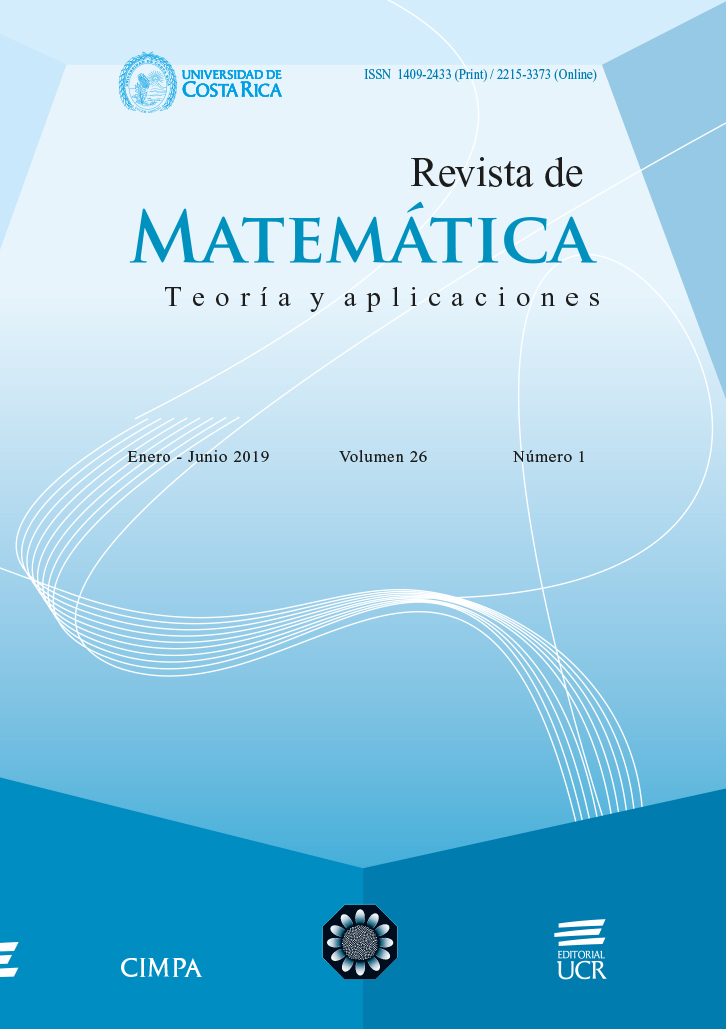Abstract
We consider a general mixed-effects model, where the variability of random effects of experimental individuals or units is incorporated through a stochastic differential equation. These models are useful for simultaneously analysing data from repeated measurements taken in discrete time and with errors. A Markov chain Monte Carlo algorithm was implemented to make the statistical inference a posteriori. A diagnostic analysis was carried out on the estimated parameters to detect if the model is suitable and show its convergence, in addition to the traces and posterior densities are shown. The methodology is illustrated using simulated data.
References
Bacher, P.; Madsen, H. (2011) “Identifying suitable models for the heat dynamics of buildings”, Energy and Buildings 43(7): 1511–1522.
Dahlin, J.; Kohn, R.; Schön, T. (2016) “Bayesian inference for mixed effects models with heterogeneity”, Technical Report from Automatic Control at Linköpings Universitet, (LiTH-ISY-R-3091). Linköping, Sweeden.
Delattre, M.; Lavielle, M. (2013) “Coupling the SAEM algorithm and the extended Kalman filter for maximum likelihood estimation in mixed effects diffusion models”, Statistics and Its Interface 6(4): 519–532.
Ditlevsen,S.; DeGaetano,A.(2005)“Mixed effects in stochastic differential equation models”, Statistical Journal 3(2): 137–153.
Ditlevsen, S.; Samson, A. (2013) “Introduction to stochastic models in biology”, in: M. Bachar & J. Batzel & S. Ditlevsen (Eds.) Stochastic Biomathematical Models, Springer, Berlín, Heidelberg: 3–35.
Doucet, A.; De Freitas, N.; Gordon, N. (2001) Sequential Monte Carlo Methods in Practice. Springer, New York.
Donnet, S.; Foulley, J.; Samson, A. (2010) “Bayesian analysis of growth curves using mixed models defined by stochastic differential equations”, Biometrics 66(3): 733–741.
Faugeras, O.; Touboul, J.; Cessac, B. (2009) “A constructive meanfield analysis of multi-population neural networks with random synaptic weights and stochastic inputs”, Frontiers in Computational Neuroscience 3(1): 1–28.
Hansen, A.; Duun-Henriksen, A.; Juhl, R.; Schmidt, S.; Norgaard, K.; Jorgensen, J.; Madsen, H. (2014) “Predicting plasma glucose from interstitial glucose observations using bayesian methods”, Journal of Diabetes Science and Technology 8(2): 321–330.
Heidelberger, P.; Welch, P. D. (1983) “Simulation run length control in the presence of an initial transient”, Operations Research 31(6): 1109–1144.
Hermann, S.; Ickstadt,K.; Müller,C.(2016)“Bayesian prediction of crack growth based on a hierarchical diffusion model”, Applied Stochastic Models in Business and Industry 32(4): 494–510.
Iversen, J.; Morales, J.; Moller, J.; Madsen, H. (2014) “Probabilistic forecasts of solar irradiance by stochastic differential equations”, Environmetrics 25(3): 152–164.
Overgaard, R.; Jonsson, N.; Tornoe, C.; Madsen, H. (2005) “Non-linear mixed-effects models with stochastic differential equations: implementation of an estimation algorithm”, Journal of Pharmacokinetics and Pharmacodynamics 32(1): 85–107.
Picchini,U.;Lyng,J.(2016)“Stochastic differential equation mixed effects models for tumor growth and response to treatment”, Preprint,Universidad de Lund, Suecia.
Pinheiro, J.; Bates, D. (2000) Mixed-Effects Models in S and S-PLUS. Springer-Verlag, New York.
Whitaker, G.A.; Golightly, A.; Boys, R.; Sherlock, C. (2017) “Bayesian inference for diffusion-driven mixed-effects models”, Bayesian Analysis 12(2): 435–463.





